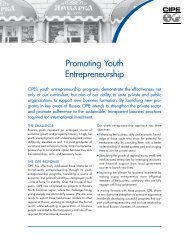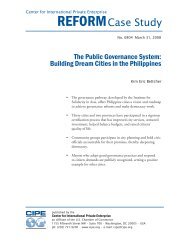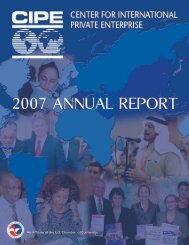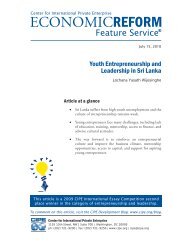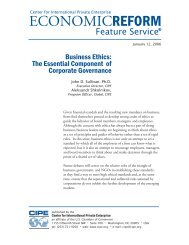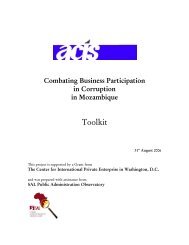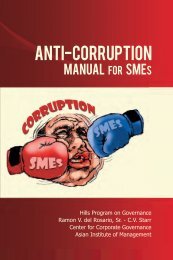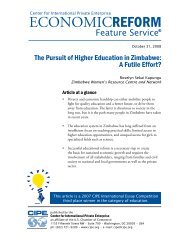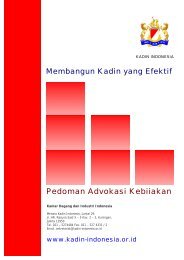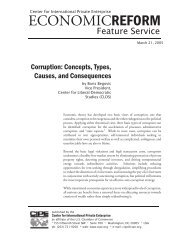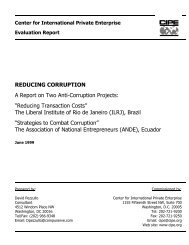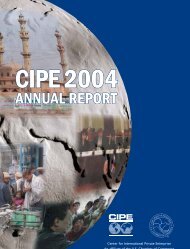Responsible Business Guide: A Toolkit for Winning Companies
Responsible Business Guide: A Toolkit for Winning Companies
Responsible Business Guide: A Toolkit for Winning Companies
You also want an ePaper? Increase the reach of your titles
YUMPU automatically turns print PDFs into web optimized ePapers that Google loves.
RBG<br />
<strong>Responsible</strong> <strong>Business</strong> <strong>Guide</strong>: A <strong>Toolkit</strong> <strong>for</strong> <strong>Winning</strong> <strong>Companies</strong><br />
Responsibility Per<strong>for</strong>mance Level III: Practice<br />
From here a company proceeds to Practice, the third step of responsible behavior. Here<br />
is where the management assumes the biggest burden; it is up to them to lead by example,<br />
establish rewards and sanctions, and ensure that policies become practice and over time<br />
become integral to company decision-making. Employees<br />
Climbing up the ladder of the<br />
establish their work culture in response to expectations<br />
“4-Ps”, that is, from Perception to<br />
from management, particularly when it comes to making<br />
Preparation to Practice to value judgments in daily decisions. This is where companies<br />
Per<strong>for</strong>mance, ensures weaving become most vulnerable. There are many examples of<br />
socially responsible conduct into companies where behavior turned out to be contrary to<br />
high-sounding credos and policy statements, invariably<br />
the very fabric of corporate<br />
pointing to corporate leaders not walking the talk and<br />
behavior. making policies meaningless.<br />
Responsibility Level IV: Per<strong>for</strong>mance<br />
The final step is Per<strong>for</strong>mance, where a company shows its capacity <strong>for</strong> sustained responsible<br />
behavior. This, unlike the first three steps, is a state that requires constant oversight, but<br />
at the same time promises the greatest reward <strong>for</strong> a company. It is a state where personnel<br />
and management share a clear set of values integrated into the company’s business model,<br />
retain familiarity with guiding policies and procedures through experience-sharing and<br />
documentation, take decisions in con<strong>for</strong>mity with values, identify any breach confidently,<br />
and take pride in communicating their company values through words and action. This is<br />
the state where a company is seen to live its values. This is when the company finds itself<br />
valued as a corporate citizen within its community.<br />
Returning to the RBF, the six pillars reflect distinct dimensions of demonstrable behavior.<br />
The framework is organized in a modular yet interlinked manner, so that each dimension<br />
builds on the one be<strong>for</strong>e and contributes to the one after. Hence, if a company structures<br />
its management systems to be accountable, it can develop policies that reflect this quality<br />
in implementation and be communicated with confidence. This in turn helps build a<br />
feedback mechanism in which stakeholder participation helps to create better products,<br />
which leads to satisfied customers and finally to profitability. The RBF assumes that<br />
companies capable of developing each of these six responsible behaviors to a sustained<br />
per<strong>for</strong>mance level have higher competitive potential.<br />
52<br />
<strong>Responsible</strong> <strong>Business</strong> Initiative



